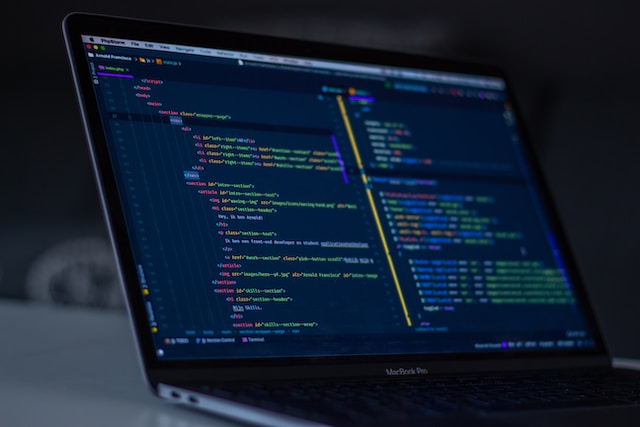Cell phone jammers can block or disrupt communication signals within a specific area. They have been debated for years due to their impact on privacy and safety. This article explores the ethical implications and how to balance privacy concerns and public safety considerations.
The Advantages of Cell Phone Jammers
Cell phone jammers offer particular advantages when controlling mobile communications is necessary. While their use is subject to ethical and legal considerations, the following are some potential advantages of cell phone jammers:
- Enhanced Security in Sensitive Areas: Cell phone jammers can help prevent unauthorized communication within sensitive areas such as government facilities, military bases, and confidential business meetings. By blocking signals, they deter potential security breaches and unauthorized dissemination of sensitive information.
- Disruption of Illicit Activities: Jammers can be valuable tools for law enforcement combating criminal activities. In correctional facilities, for instance, jammers can prevent inmates from using smuggled cell phones to coordinate illegal activities, harass victims, or plan escapes.
- Reducing Distractions in Critical Environments: In specific settings like theaters, concert halls, and classrooms, cell phone use can be a significant distraction. Jammers can create a controlled environment, enhancing the overall experience for everyone and allowing better focus on the main event or activity.
- Preventing Cheating in Exams: In educational institutions, cell phone jammers can be employed to minimize cheating during exams. By blocking mobile signals, students are deterred from using their phones to access unauthorized information or engage in academic dishonesty.
- Improving Road Safety: Using cell phones while driving is a significant cause of accidents and road fatalities. In specific locations, such as near schools or accident-prone areas, temporary cell phone jamming may be considered to discourage distracted driving.
- Minimizing Noise Pollution: In places where loud ringtones and constant phone conversations can contribute to noise pollution, such as libraries or hospitals, cell phone jammers can help maintain a quieter and more peaceful environment.
- Enhancing Privacy at Personal Events: In private events like weddings or family gatherings, hosts may choose to use jammers to ensure privacy and limit attendees’ distractions from excessive cell phone use.
It’s essential to note that while these advantages may seem beneficial, the use of cell phone jammers must be carefully regulated and controlled. Balancing public safety benefits with individual privacy and communication rights is crucial to avoid unintended consequences and ethical concerns.
Legal and Ethical Considerations
Legal and ethical considerations surrounding cell phone jammers are complex due to their potential impact on individual rights, public safety, and the overall functioning of communication networks.
Devices are prohibited due to concerns about interference with licensed spectrum bands, emergency communications, and individual rights. In some cases, there may be specific exceptions for authorized entities like law enforcement or government agencies.
The ethical dilemma lies in balancing preserving individual privacy and ensuring public safety. Striking this balance involves careful consideration of the necessity and proportionality of jamming in different scenarios.
Alternative Solutions

Various alternative solutions can be considered when addressing public safety concerns without resorting to cell phone jammers. These alternatives aim to mitigate the adverse effects of cell phone jamming while still achieving the desired outcomes. Some of these solutions include:
- Geofencing and Signal Management Systems: Geofencing technology can create virtual boundaries around specific areas where mobile communication restrictions are required. Signal management systems can then control the power of the signals within these boundaries to minimize disruptions to nearby areas and emergency services.
- Mobile Signal Detection and Identification: Implementing systems that can detect and identify unauthorized cell phone signals can be a practical approach. These systems can alert authorities when prohibited cell phone use is seen in sensitive areas, allowing targeted responses to potential security threats.
- Wi-Fi and Bluetooth Interference: Instead of blocking all cellular signals, venues could focus on limiting Wi-Fi and Bluetooth signals, often used for data communication and smartphone internet access. This approach would allow emergency calls and essential cellular communication to continue while curbing distractions.
- Mobile Phone Use Education and Awareness: Promoting responsible mobile phone use and raising awareness about the importance of not using phones in certain situations, such as in theaters or during driving, can significantly reduce disruptive behavior without the need for technical solutions.
- Encouraging Signal-Free Zones: Creating designated signal-free zones within public places allows individuals to voluntarily disconnect from their devices in certain areas, fostering a more focused and considerate environment.
- Social Norms and Peer Pressure: Incorporating social norms that discourage disruptive phone use can help influence behavior positively. When individuals observe others adhering to no-phone policies, it can encourage them to do the same.
- Mobile Phone Signal Jamming Exceptions: Exploring exceptions to the jamming ban in critical situations, such as natural disasters or terrorist threats, can be considered. However, this must be implemented with strict oversight and only during emergencies to prevent misuse.
- Signal-Blocking Pouches or Containers: In specific environments like examination halls, providing signal-blocking pouches or containers to store phones temporarily can prevent cheating while allowing individuals to regain access once they leave the area.
- Mobile Phone Jammer Alternatives: Developing alternative technologies that can selectively turn off specific features of mobile phones, such as camera jamming or text messaging restrictions, can offer more granular control without disrupting overall communications.
- Strict Enforcement of Existing Laws: Enforcing existing regulations against mobile phone use in certain areas, such as no-phone zones in theaters or libraries, can be an effective solution when coupled with substantial penalties for violations.
Emphasizing the need for careful consideration of cell phone jammer usage. Emphasize the importance of balancing protecting privacy rights and ensuring public safety in an increasingly connected world.


